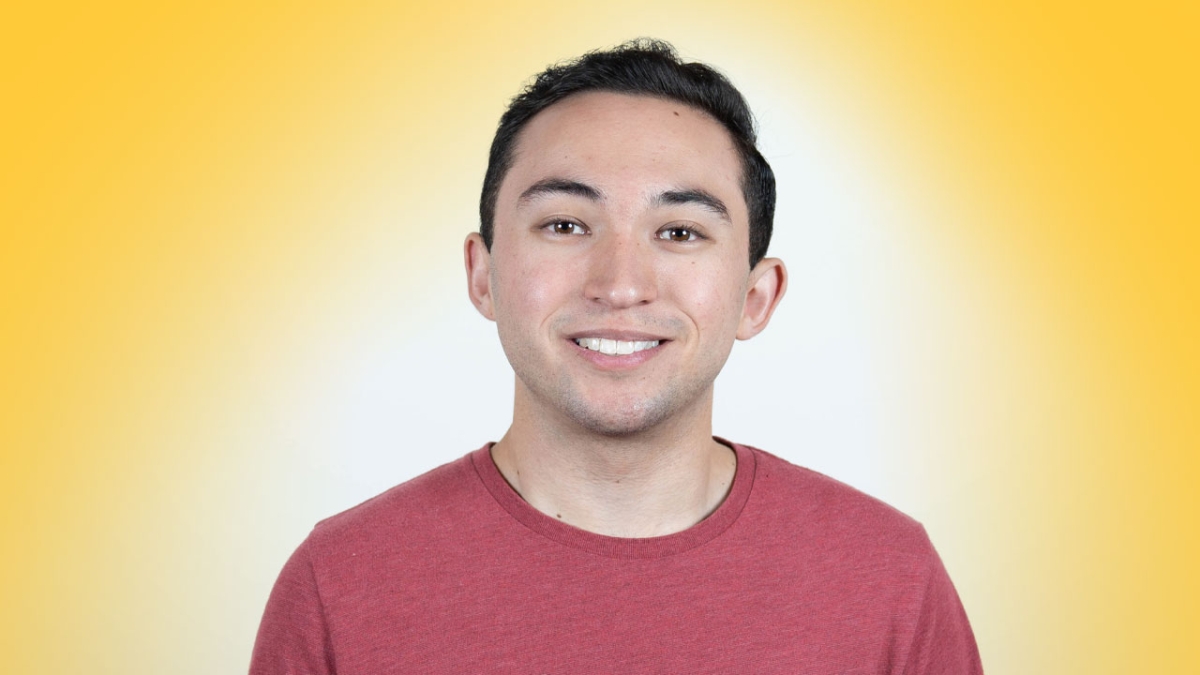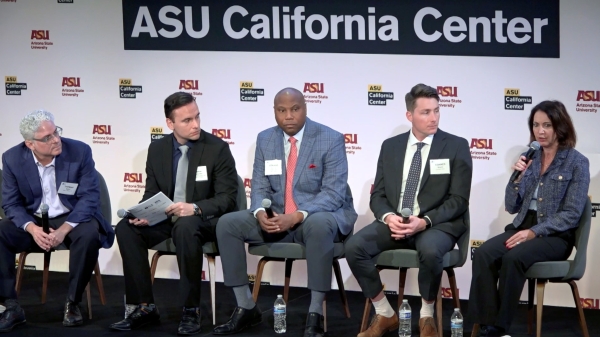Childhood dream becomes a reality for Cronkite graduate

His experience at Cronkite helped Andrew Onodera receive an internship at 12News in Phoenix, where he was promoted to part-time assignment desk editor before getting hired as a full-time producer. Onodera has also served as a producer for Cronkite News, the news division of Arizona PBS, since last semester.
Editor’s note: This story is part of a series of profiles of notable spring 2023 graduates.
Andrew Onodera was drawn to journalism as early as middle school. When he reached high school, he was broadcasting for his school’s newscast.
These experiences, along with watching his local television news, helped him realize that journalism was his future.
Onodera will graduate in May with his master’s degree in mass communication. Arizona State University's Cronkite School of Journalism and Mass Communication named Onodera an Outstanding Graduate Student for this semester. He received his undergraduate degree in journalism and mass communication with a minor in political science from the Cronkite School last year.
Onodera worked as the multimedia director at The State Press, overseeing the multimedia department, which includes the usage of photos, illustrations, video, podcasts and anything non-print.
His experience at Cronkite helped him receive an internship at 12News in Phoenix, where he was promoted to part-time assignment desk editor before getting hired as a full-time producer. Onodera has also served as a producer for Cronkite News, the news division of Arizona PBS, since last semester.
“I learned so much about how a real newsroom operates and how the pace of it is so much quicker than anything you could ever imagine in college, and you get adjusted to the pace and learn about it all side-by-side with professionals from the Valley,” Onodera said. “I learned how to write really well, as well as how to spot a good story, and they teach you really good news judgment.”
Onodera was among a group of students who won “Best of Festival” and first-place awards in the “Television Newscast” category for its Cronkite News broadcast at the 2023 Broadcast Education Association’s Festival of Media Arts contest. He also won an Arizona Press Club award for student investigative reporting in 2020.
Question: What was your “aha” moment when you realized you wanted to study journalism and mass communications?
Answer: I don’t know if there was ever a single moment. I think it was just that I started getting into it in school. I mean, probably as early as middle school. And then in high school, I did some broadcasting. We had a broadcast class, and it’s just something that I kind of tried. It was more of a hobby at first, and then it was, "Wow, I really like this field." It was a very big part of my life. And I think that it just kind of built.
Q: What’s something you learned while at ASU — in the classroom or otherwise — that surprised you or changed your perspective?
A: COVID was kind of the defining moment of this college experience. It was a good portion of what happened during my freshman year, toward the end. And I think that what I learned through that and just working with a lot of professors in all of the different Cronkite classes is how to adapt. The news doesn’t stop; the TV industry doesn’t stop. During COVID, there was more news than ever to report, and we couldn’t leave the house. It was a lot of learning how to do news over Zoom, learning how to make a video on your iPhone. We really had to break it down, and a lot of our professors did a great job of teaching us how to do the very basics in a way that no one had ever seen before, and make it look really good.
Q: Why did you choose ASU?
A: I definitely looked at all of the top journalism schools in the country. And I think what really sold me on ASU was that hands-on experience. I love the fact that you could declare your major as a freshman and start taking journalism classes. As a freshman, I really wanted to get four years of journalism education. It was pretty hands-on and this was it. That’s what separated Cronkite from all the other schools for me is that I could get those four years of taking classes that I really liked and learning how to do journalism from great professors.
Q: Which professor taught you the most important lesson while at ASU?
A: I would say Sean Holstege. I had him for JMC 201 and 301. He taught me a lot of lessons. I mean, he basically taught me how to write for news. But I would say that one of the things he taught me that really kind of sticks out was how to make sure that you have everything you possibly need for a story. How to critique your work enough to know that you need more reporting.
One of the lessons that he always talked about was if you don’t know what to write, you probably need more reporting. He taught me how to make sure that you’ve talked to enough people, that you get the full story. One of the things that he also says is if you know something, scream it from the rooftops. If you have the facts to prove it and you have all of that lined up, don’t pull your punches. If you can say it, say it with authority.
Q: What’s the best piece of advice you’d give to those still in school?
A: It’s really easy in this field to get burned out. So, take breaks, take time off, go on vacation, even if that just means you’re sitting at home doing nothing for four days, three days. I think that it’s really easy, especially when you’re in school, to feel like you have to go, go, go. And you know, the news is always happening. There’s always stuff to write about and cover, and there’s always that next opportunity that you’re chasing or the next internship. It’s really easy to just get really overwhelmed with everything and bite off way too much. That is detrimental because I think it pushes a lot of people out of this profession.
Q: What was your favorite spot on campus, whether for studying, meeting friends or just thinking about life?
A: I really like the area outside the Memorial Union. Right outside the Starbucks where there are those solar panels to provide shade. It’s right between the MU and Hayden Library. You can sit out there and there’s some shade so it’s not super hot. And it’s a super active part of campus so you can people-watch, but it’s also kind of relaxing.
Q: What are your plans after graduation?
A: I’m going to be staying here in the Valley, right down the street from Cronkite, as a full-time producer at 12News.
Q: If someone gave you $40 million to solve one problem on our planet, what would you tackle?
A: I would probably invest it in trying to find a way to solve the water crisis down here. I think there’s a lot of panic, that’s probably like the scariest thing going on, right? We’re staring it in the face. I would probably try to invest in ways to solve that water crisis, whether it’s converting people’s lawns to xeriscape, or something of the sort. I’m just trying to find a way to make sure that Phoenix and the rest of the Southwest doesn’t run out of water before I’m 100.
Written by Sierra Alvarez.
More Law, journalism and politics

Exhibit uses rare memorabilia to illustrate evolution of US presidential campaigns
After one of the most contentious elections in history, a new museum exhibit offers a historical perspective on the centuries-old…

TechTainment conference explores the crossroads of law, technology, entertainment
What protections do writers, actors, producers and others have from AI? Will changing laws around name, image and likeness (…

How to watch an election
Every election night, adrenaline pumps through newsrooms across the country as journalists take the pulse of democracy. We…